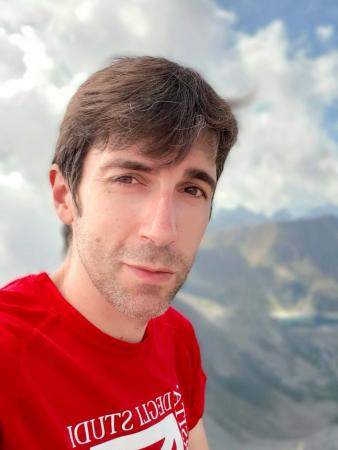
Massimo Nocente
Massimo Nocente
University of Milano-Bicocca, Milan, Italy
Tuesday, May 30, 2023
3:00pm
Abstract: The three-ion schemes have recently emerged as an effective method for plasma heating by radiofrequency (RF) waves in tokamak plasmas. The schemes rely on the acceleration of a minority absorber (with a typical concentration of less than 1%) when the main plasma is made by two majority species that determine the wave polarization. Experimentally, there are two major areas for application of the schemes in tokamak plasmas. One is the effective generation of a fast ion population in the MeV range, which is in turn used to study the impact that energetic ions have on turbulence and transport in plasmas with dominant electron heating. Another is the acceleration of heavy ion impurities, for example those that naturally arise from the erosion of the machine first wall, and which effectively transfer their energy to the main fuel ions, resulting in an enhanced thermonuclear reaction rate.
In this presentation, a summary of recent experimental results obtained at the Joint European Torus on the application of the three-ion RF schemes in both of the above areas will be provided. In plasmas where the scheme is used as an effective source for fast ion generation, a rich spectrum of fast ion driven modes unexpectedly coexists with high confinement, despite the alleged L-mode nature of the discharge. In D-T plasmas with 9Be impurities, evidence of ion heating is found, as demonstrated by neutron and charge exchange data. Possible applications of these results to plasmas of next generation devices, such as ITER or SPARC, are finally discussed.
Bio: Massimo Nocente (he/him/his) is associate professor of physics at the University of Milano-Bicocca, Milan, Italy. His research interests are in the development and application of nuclear diagnostics (mostly neutron and gamma-ray detectors) for nuclear fusion, focusing on fast particles and their effects on the plasma. He has developed neutron and gamma-ray based diagnostics for major tokamaks, in and outside Europe, and has participated in or coordinated experiments on fast particle physics using these systems. He is a member of the ITPA group on Energetic Particle Physics and an ITER Scientist Fellow.